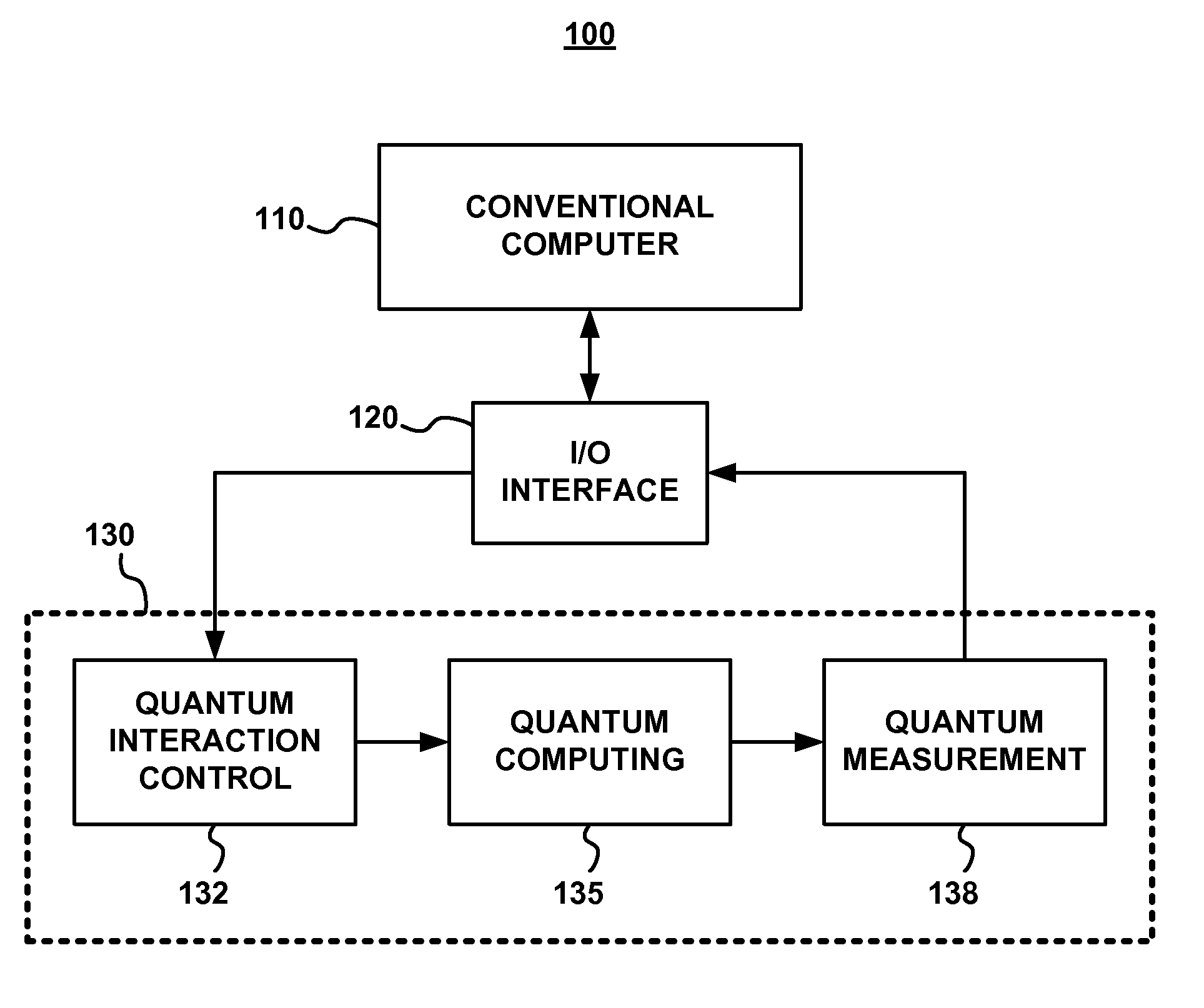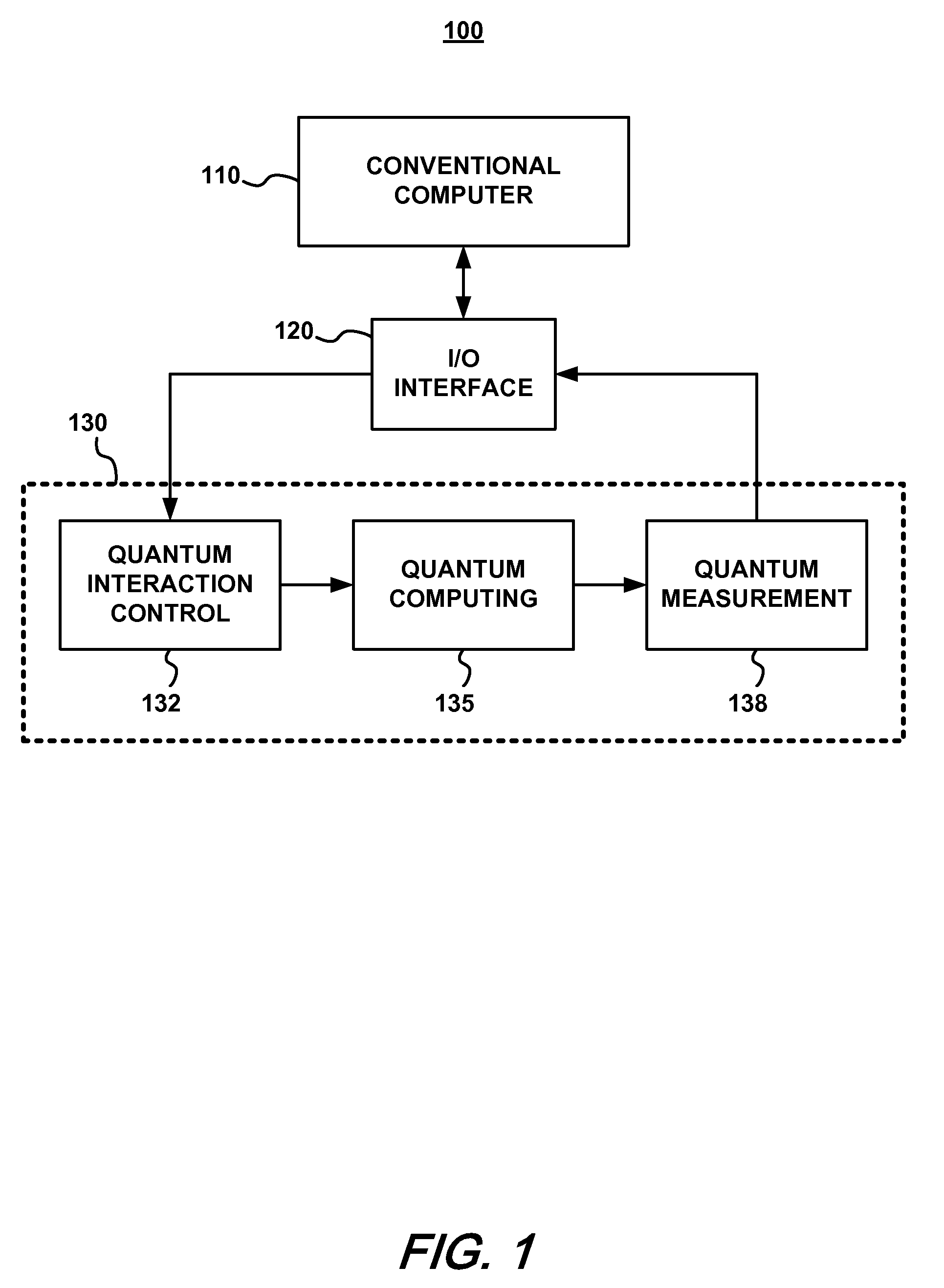Estimating a quantum state of a quantum mechanical system
a quantum mechanical system and quantum state technology, applied in the field of quantum computing, can solve the problems of not being addressed, not being able to measure all spins (qubits) of the system, and the problem of high degenerate quantum state tomography
- Summary
- Abstract
- Description
- Claims
- Application Information
AI Technical Summary
Benefits of technology
Problems solved by technology
Method used
Image
Examples
Embodiment Construction
[0014]FIG. 1 is a block diagram of an exemplary embodiment of a quantum computer system 100. The system 100 includes a conventional digital computer 110 (e.g., with CPU, memory, bus, etc.) coupled via an I / O interface 120 to a quantum sub-system 130.
[0015]The computer 110 formulates a problem to be solved (e.g., factoring, searching) based on, for example, user input and / or interactions with other system(s). The interface 120 transfers information about the problem to be solved from the computer 110 to the quantum sub-system 130 and extracts information about the solution back from the quantum sub-system 130 to the computer 110. The quantum sub-system 130 includes a quantum interaction control apparatus 132 operatively coupled to a quantum computing apparatus 135, which in turn is operatively coupled to a quantum measurement apparatus 138.
[0016]The quantum interaction control apparatus 132 interacts with the quantum computing apparatus 135 to set up the problem to be solved by the q...
PUM
 Login to View More
Login to View More Abstract
Description
Claims
Application Information
 Login to View More
Login to View More - R&D
- Intellectual Property
- Life Sciences
- Materials
- Tech Scout
- Unparalleled Data Quality
- Higher Quality Content
- 60% Fewer Hallucinations
Browse by: Latest US Patents, China's latest patents, Technical Efficacy Thesaurus, Application Domain, Technology Topic, Popular Technical Reports.
© 2025 PatSnap. All rights reserved.Legal|Privacy policy|Modern Slavery Act Transparency Statement|Sitemap|About US| Contact US: help@patsnap.com



